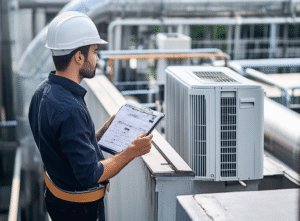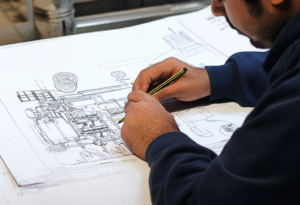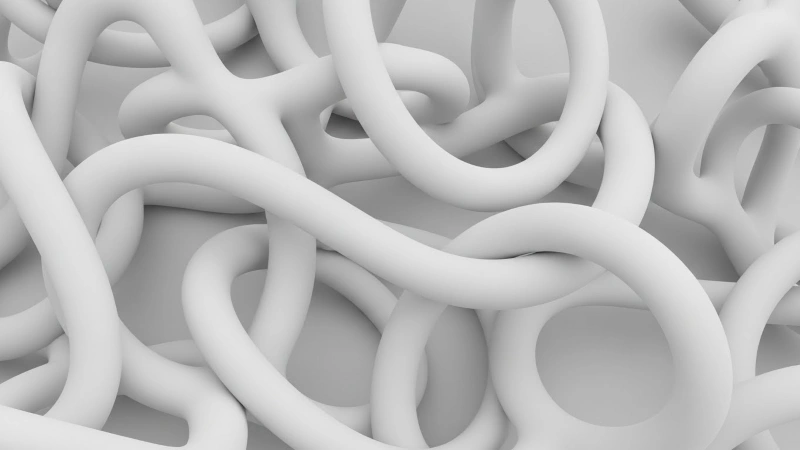
The importance of sustainability in building design has grown exponentially in recent years. With environmental concerns reaching new heights, the demand for energy-efficient, environmentally friendly buildings is more significant than ever before. One crucial element in achieving sustainable design goals is the role of HVAC design engineers.
This article explores how HVAC design engineers are contributing to sustainable building design, emphasizing their duties, responsibilities, and the impact of their work.
Sustainability in the construction industry is becoming a focal point for both developers and clients. With the increase in global environmental awareness, there is a push towards minimizing the environmental footprint of new and existing buildings.
Sustainable building practices aim to reduce energy consumption, use eco-friendly materials, and incorporate designs that enhance the overall performance of buildings while being mindful of the environment.
An HVAC design engineer is responsible for designing and implementing heating, ventilation, and air conditioning systems in buildings. Their work ensures that these systems are energy-efficient, cost-effective, and aligned with both the architectural design and the environmental standards of a building.
They analyze the energy needs of a building, select appropriate systems, and ensure that the HVAC systems are integrated seamlessly into the building’s design.

The duties and responsibilities of HVAC design engineers are broad and vital to the overall success of a building project. Their primary responsibilities include:
HVAC design engineers need a combination of technical, analytical, and communication skills. Key expertise includes:
One of the primary ways HVAC design engineers contribute to sustainable building practices is through the design of energy-efficient systems. These systems aim to reduce energy consumption, lower utility bills, and minimize the environmental impact of heating, cooling, and ventilation.
By choosing energy-efficient equipment, optimizing airflow, and utilizing renewable energy sources, HVAC engineers significantly enhance the sustainability of the buildings they work on.
Energy-efficient HVAC systems are designed to consume less energy while maintaining comfort levels. These systems may include advanced technologies such as variable refrigerant flow (VRF) systems, heat recovery ventilation, or energy recovery ventilators (ERVs), all of which contribute to a building’s overall energy savings.
HVAC design engineers also play a crucial role in helping buildings achieve green certifications such as LEED (Leadership in Energy and Environmental Design) or BREEAM (Building Research Establishment Environmental Assessment Method). These certifications require buildings to meet certain sustainability criteria, including energy efficiency, waste reduction, and the use of eco-friendly materials.
By designing HVAC systems that contribute to a building’s sustainability goals, HVAC engineers directly impact the building’s certification process. The efficient use of energy and the reduction of a building’s carbon footprint are often key criteria for obtaining these certifications.
Sustainability isn’t just about energy savings; it also encompasses improving indoor environmental quality (IEQ). HVAC systems that provide clean, well-ventilated air contribute to the health and comfort of building occupants. HVAC design engineers ensure that these systems include proper ventilation, humidity control, and air filtration, which are essential for creating healthy indoor environments.
A well-designed HVAC system can regulate temperature, humidity, and air quality to enhance productivity and well-being. This is especially important in office buildings, schools, and healthcare facilities, where indoor air quality can significantly impact the health and comfort of occupants.
Passive design strategies are used by HVAC design engineers to reduce the need for mechanical heating and cooling. These strategies focus on maximizing natural heating, cooling, and ventilation, using features like building orientation, shading, and thermal mass. By incorporating passive design principles, HVAC engineers can significantly reduce the energy required to heat and cool a building.
For example, a well-positioned building can take advantage of natural sunlight to warm up spaces during the winter, reducing the need for heating systems. Similarly, strategic window placements and shading can help cool the building during hot months, minimizing the reliance on air conditioning.
The integration of renewable energy sources, such as solar panels, geothermal heat pumps, and wind energy, is another way HVAC design engineers contribute to sustainability. By incorporating renewable energy into the HVAC system, engineers can reduce a building’s dependence on traditional, non-renewable energy sources.
For instance, solar-powered HVAC systems can reduce the energy consumed by traditional air conditioning units, while geothermal systems use the earth’s natural temperature to provide heating and cooling. These solutions significantly cut down on greenhouse gas emissions and energy costs.
Smart HVAC systems use advanced sensors, automation, and artificial intelligence (AI) to optimize energy use in real time. These systems adjust heating and cooling based on occupancy patterns, external weather conditions, and energy demand. By integrating smart technology, HVAC engineers can ensure that systems only use energy when necessary, further reducing energy waste.
Building automation systems (BAS) also allow for centralized control of HVAC, lighting, and other systems, making it easier to monitor and manage a building’s energy use. This integration of smart systems helps buildings become more adaptable and responsive to changing conditions, enhancing sustainability.
Another key strategy in sustainable HVAC design is the use of advanced materials, such as energy-efficient insulation, low-emissivity (Low-E) windows, and high-performance ductwork. These materials help improve the building’s thermal performance, reducing the load on HVAC systems and lowering energy consumption.
One of the main challenges HVAC design engineers face is balancing energy efficiency with cost. While energy-efficient systems can save money in the long term, they often require a higher initial investment. HVAC engineers must work closely with clients to ensure that the systems they design provide both energy savings and cost-effectiveness over time.

Each building type presents its own unique challenges for HVAC engineers. Residential, commercial, and industrial buildings all have different heating, cooling, and ventilation needs, requiring customized HVAC systems. Additionally, integrating HVAC systems into buildings with complex designs, such as historic structures or high-rise buildings, can present technical challenges that require innovative solutions.
The rapid pace of technological advancements in the HVAC industry presents another challenge for HVAC engineers. To stay competitive and provide the most efficient solutions, HVAC engineers must continually update their skills and knowledge. This includes staying informed about new HVAC technologies, energy standards, and green building certifications.
The demand for freelance HVAC design engineers has increased as businesses and construction firms look for specialized expertise on a project-by-project basis. Freelance engineers offer flexibility and the ability to bring in specialized knowledge for specific tasks, such as designing sustainable HVAC systems or implementing cutting-edge technology.
Freelancers can work on various projects, from small-scale residential buildings to large commercial developments, contributing their expertise to sustainable building efforts.
Freelance HVAC engineers often collaborate with other professionals, such as architects, general contractors, and sustainability consultants, to bring innovative HVAC solutions to life. Their flexibility and specialized skills make them valuable assets in green building projects, where sustainability is a top priority.
HVAC design engineers are pivotal in advancing sustainable building design by creating energy-efficient HVAC systems that reduce environmental impact. From passive design strategies to the integration of renewable energy sources and smart technology, HVAC engineers are driving innovations that contribute to the sustainability of the built environment.
As the construction industry continues to prioritize sustainability, the role of HVAC engineers will only grow in importance. Energy-efficient, environmentally friendly HVAC solutions will play a critical role in shaping the future of construction, ensuring that buildings not only meet today’s needs but also contribute to a greener, more sustainable world.
About the Author
With a deep understanding of what companies need to build top-performing remote teams and fully remote departments, his journey with Uptalent has been dedicated to creating exceptional remote work solutions and helping companies thrive with top-tier remote talent.
Expertise:
Explore these related articles to dive deeper into the topic and discover more insights.

How a Digital Marketing Strategist Helps You Build Effective Campaigns

5 Key Benefits of SEO Outsourcing for Digital Marketing Agencies

The Importance of a Payroll Specialist in Preventing Payroll Errors